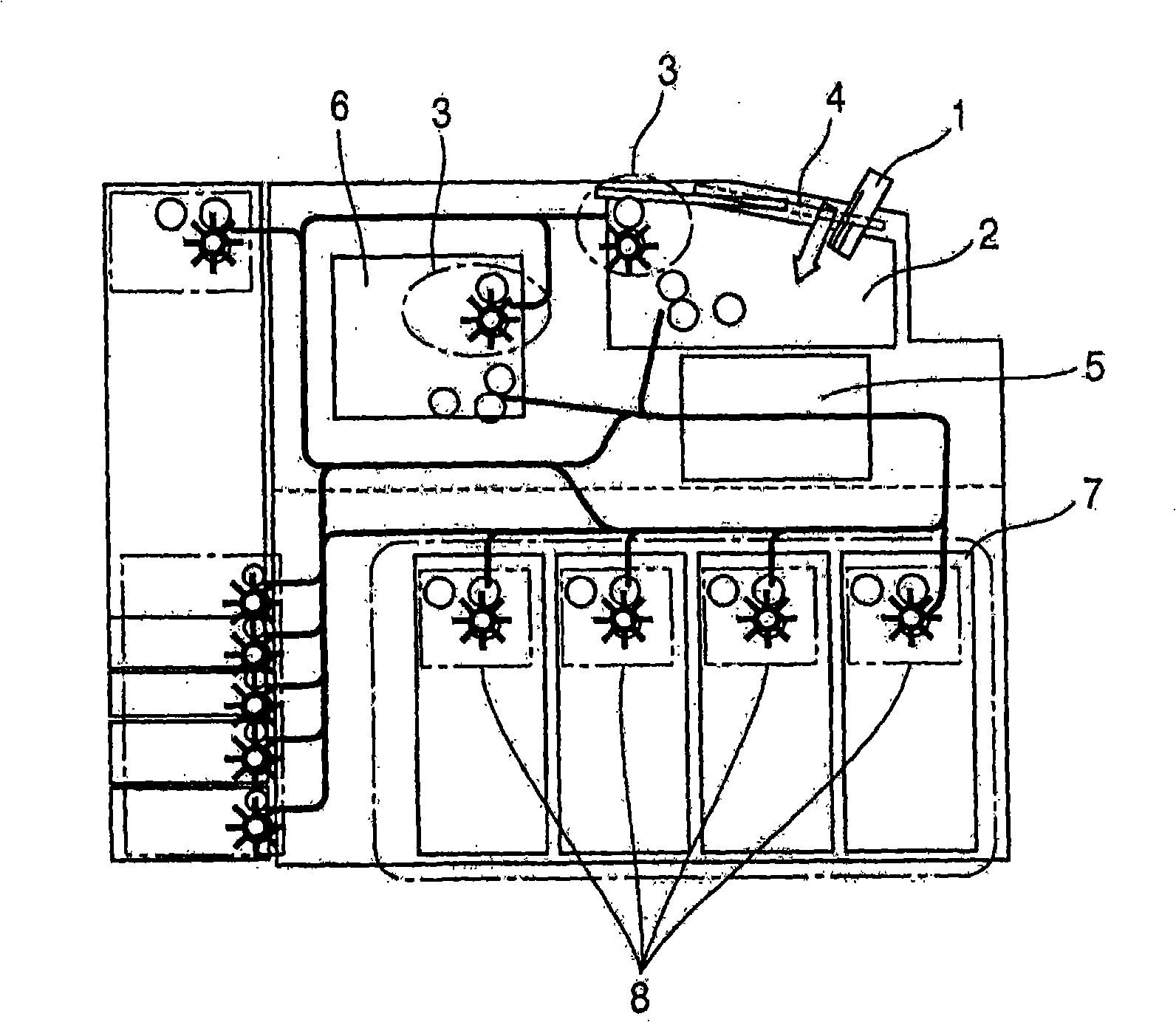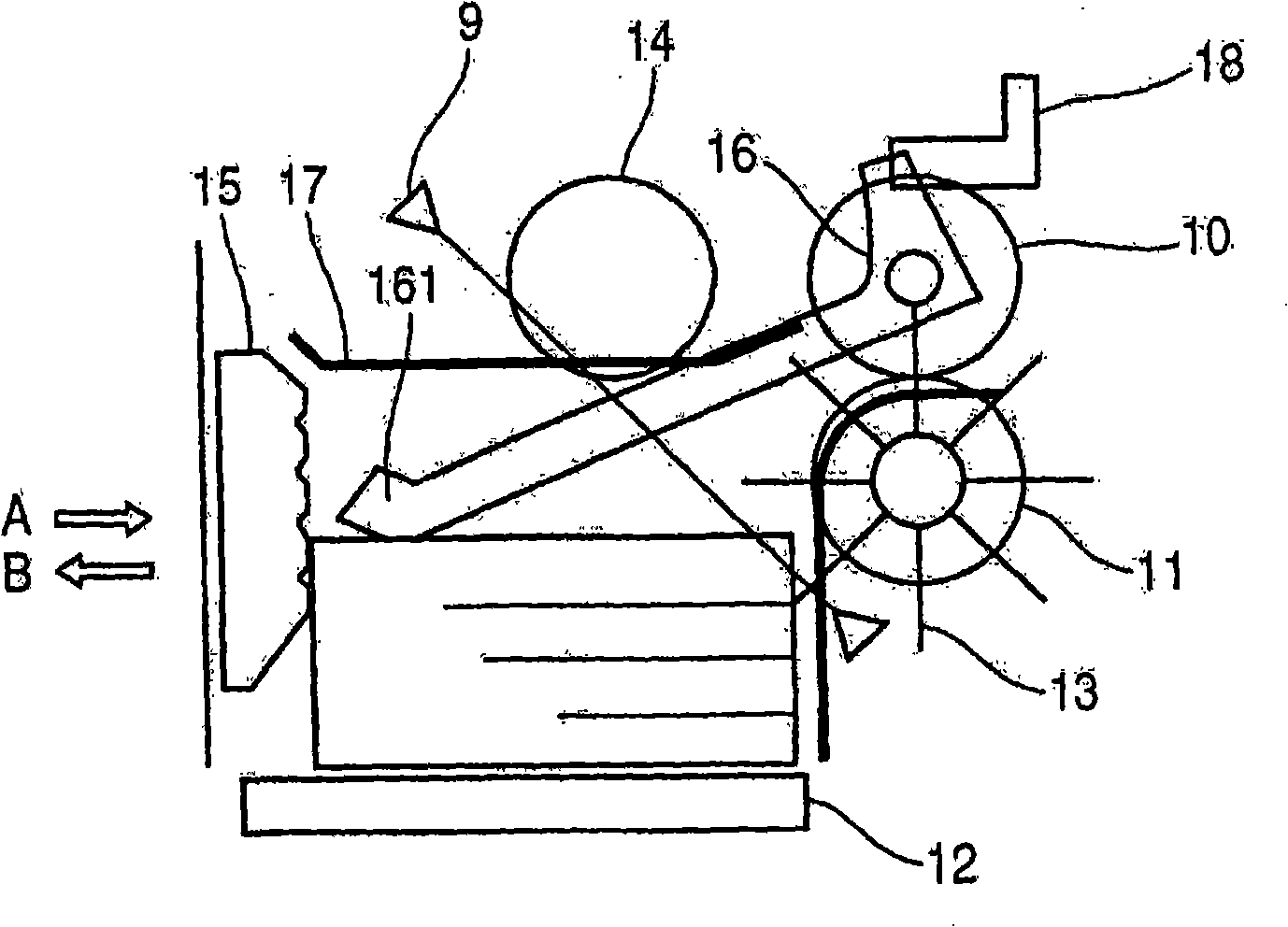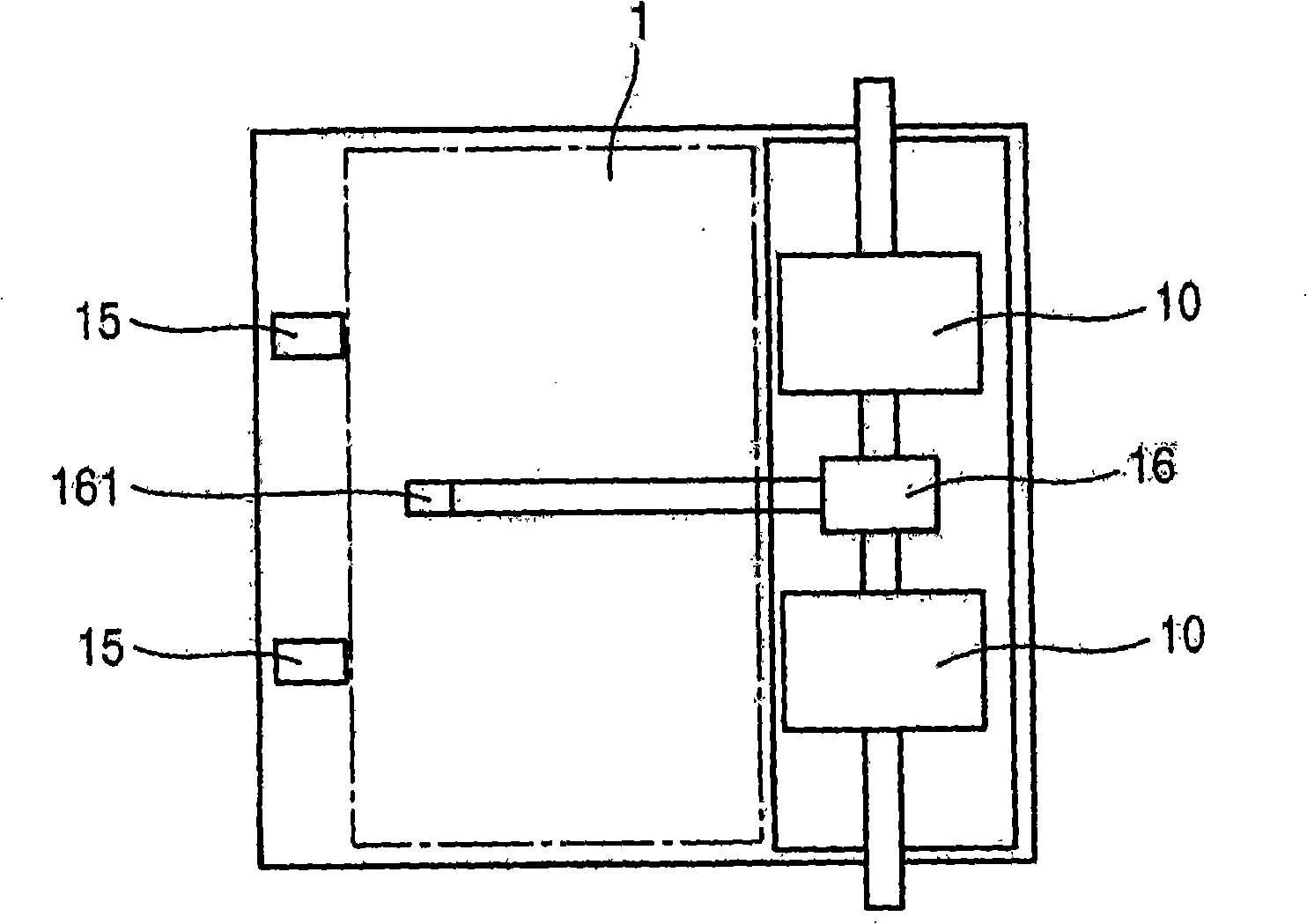Bank note automatic teller machine
An automatic teller machine and banknote technology, which is applied to banknote processing equipment, handling coins or valuable banknotes, and devices for accepting coins, etc., and can solve problems such as large gaps and poor banknote stacking.
- Summary
- Abstract
- Description
- Claims
- Application Information
AI Technical Summary
Problems solved by technology
Method used
Image
Examples
Embodiment 1
[0056] figure 1 It is a block diagram showing the banknote automatic teller machine of an embodiment.
[0057] In the figure, when the shutter 4 of the deposit and withdrawal port 2 is opened and the banknote 1 is inserted, the insertion is confirmed by a sensor in the deposit and withdrawal port (not shown), and the shutter 4 is closed.
[0058] Thereafter, the banknotes are separated one by one in the separating unit. After the separation, the banknotes 1 are discriminated by the identifying unit 5 , transported to the temporary storage unit 6 , and stacked in the stacking unit 3 . The temporary storage unit 6 and the deposit and withdrawal port 2 have the same separation part although the accumulation port and the separation port are different.
[0059] The banknotes 1 are separated one by one from the separation unit, and the denomination of the banknotes is discriminated in the identification unit 5 , and are transported to each banknote storage unit 7 through a not-sho...
Embodiment 2
[0073] This embodiment has the same structure as the first embodiment above, and when the banknote is stuck at the banknote stopper 15 , the stuck state can be released by using the banknote presser 17 .
[0074] use Figure 5 The action flow will be described.
[0075] The number of passing sheets is counted by a sensor provided at an unillustrated discharge port (S1-1).
[0076] When the specified number of sheets has been piled up (passed) (S1-2), the detection of the position detection sensor 18 (S1-3) is implemented, and when it is connected for a certain period of time, as Figure 6 As shown, it is judged that the front end 161 of the stacking lever 16 is higher than the normal upper surface position due to the stacked banknotes caught in the banknote stopper 15, and the stacking is stopped (S1-4). Go to (S1-6) in case of disconnection.
[0077] Therefore, if Figure 7 , Figure 8 As shown, the banknote presser 17 is descended and raised, and the jamming of the accu...
Embodiment 3
[0083] This embodiment also has the same structure as the first embodiment above, and when the front end of the banknote is stuck at the banknote stopper 15 , the stuck state can be released by using the banknote presser 17 .
[0084] use Figure 9 The action flow will be described.
[0085] The number of passing sheets is counted by a sensor provided at an unillustrated discharge port (S2-1).
[0086] When the prescribed number of sheets has been piled up (passed) (S2-2), it is confirmed that each sensor is turned on (S2-3) under both conditions of the position detection sensor 18 and the upper surface detection sensor 9. When connected ( Figure 10 ), just stop stacking (S2-4), carry out the implementation of descending→rising of banknote presser 17, and release the blocking of stacked banknotes at banknote stopper 15 places (S2-5).
[0087] In the above (S2-3), in the case where only the position detection sensor 18 is turned on ( Figure 11 ), the upper surface detecti...
PUM
 Login to View More
Login to View More Abstract
Description
Claims
Application Information
 Login to View More
Login to View More - R&D
- Intellectual Property
- Life Sciences
- Materials
- Tech Scout
- Unparalleled Data Quality
- Higher Quality Content
- 60% Fewer Hallucinations
Browse by: Latest US Patents, China's latest patents, Technical Efficacy Thesaurus, Application Domain, Technology Topic, Popular Technical Reports.
© 2025 PatSnap. All rights reserved.Legal|Privacy policy|Modern Slavery Act Transparency Statement|Sitemap|About US| Contact US: help@patsnap.com



